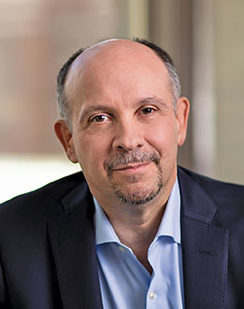The nation’s Indigenous peoples—infinitely varied in their cultures and scattered all across the continent— have at least one thing in common: Essentially, they’re forgotten. Overlooked. Invisible. Whether they live on a faraway reservation, along a suburban street, or in the high-rise condo unit next door, we non-Natives don’t see them. Not really.
First of all, they’re not that numerous. Current Census figures show that Native Americans, including Alaska Natives, represent just 2 percent of the U.S. population. Their presence in American higher education is smaller still, with Native students representing just 1 percent of undergraduates and an even smaller percentage of graduate students.
Second, a troubling truth: Our view of Indigenous peoples is so distorted by selective history, so tinged with sepia-toned nostalgia, that we don’t actually see Native Americans even when they’re standing right in front of us.
A few facts can aid our understanding, of course. Today there are nearly 6.8 million Native Americans among the nation’s total population of 332.9 million. Fifteen states have Native populations of at least 100,000, with California topping the list at around 760,000. Alaska has the highest concentration of Native Americans; its 146,000 Native residents represent nearly 20 percent of the state’s population.
Overall, Native Americans face significant challenges. They have the highest poverty rate of any major racial group, with one in four living below the poverty line. Their shared history with white-dominant education has been troubling at best and, at worst, brutally tragic: forced relocation, boarding schools, “kill-the-Indian” programs of cultural extermination.
True, the dark days of the Indian school are in the past. But even today, Native students face economic and societal barriers, and those barriers take a toll. I saw that up close early in my career while working in Washington, D.C., as an advocate for Native students and tribal colleges. I learned a great deal in the 1990s and early 2000s, visiting more than a dozen tribal college campuses—including Diné College. Things have improved in some ways for Native students since then, but not nearly enough. Statistics show that just 25 percent of Native Americans have earned at least an associate degree—a rate well below the national average (44 percent) and even further below that of whites (48.5 percent).
And yet, even when armed with all of these facts and experience—and with our good intentions—we’re ill-advised to make “overall” statements about Native people. As I said, these citizens are incredibly diverse and widely dispersed, with the federal government recognizing more than 570 tribes in 36 states. Lumping them all together is just one more way to distort the truth.
The fact is, there is no single truth, no one-size-fits-all approach to telling the Native story or ensuring the success of Native students. That’s why individual stories matter.
And that’s what this issue of Focus offers: specific stories about real-life Native students in today’s America. In the pages that follow, you’ll examine the lives and hear the voices of four Indigenous students from diverse tribes across the United States, all of whom are contributing to Native teaching and research in higher education.
You’ll meet Triston Black and Harley Interpreter, both members of the Navajo Nation and both affiliated with Diné College, the tribal college on reservation land in Tsaile, Arizona. They arrived at Diné along separate paths, but each is committed to helping the Navajo people build a better life—Black as a high school teacher, and Interpreter by improving mental health treatment on the reservation by working to “decolonize” the field of psychology.
You’ll also read about Jasmine Neosh, a member of the Menominee Nation of Wisconsin, who forsook a life of comfort and artistic pursuits in Chicago to answer the call of tribal environmentalism. She’s pursuing a degree in natural resources and public administration at the College of Menominee Nation in Keshena, Wisconsin.
Finally, you’ll meet Lisa Dirks, who grew up in the Unangax̂ (Aleut) community in the Western Aleutian Islands. Dirks, a doctoral candidate at the University of Washington in Seattle, has made it her personal and professional mission to find better, more collaborative ways to do research and collect data in Native communities.
In addition to the material in this printed version of Focus, there’s a wealth of information on Lumina’s website, https://www.luminafoundation.org. There, Focus offers several extra features, including related links and compelling videos of the students we feature.
Again, no single group of students can truly represent the variety of Native peoples, highlight the cultural strengths they embody, or personify the particular challenges they face. Still, these four promising scholars offer at least a glimpse into the lives of today’s Native American students.
Just as important, this work comes from an informed perspective. Mindful of our own inexperience and wary of our own blind spots, Lumina took steps to ensure that this story was told from within—by those who know this territory and have lived it themselves. All of the stories and images in this issue were created by a team of experienced Native journalists, led by award-winning writer and video producer Suzette Brewer, a member of the Cherokee Nation.
My Lumina colleagues and I are deeply grateful for her team’s work on this issue of Focus, and we commend it to you. We believe these stories make Native people far more “visible,” and we hope they inspire you to join us in ensuring their success—in education, in their communities, and in life.

Jamie Merisotis
President and CEO Lumina Foundation

